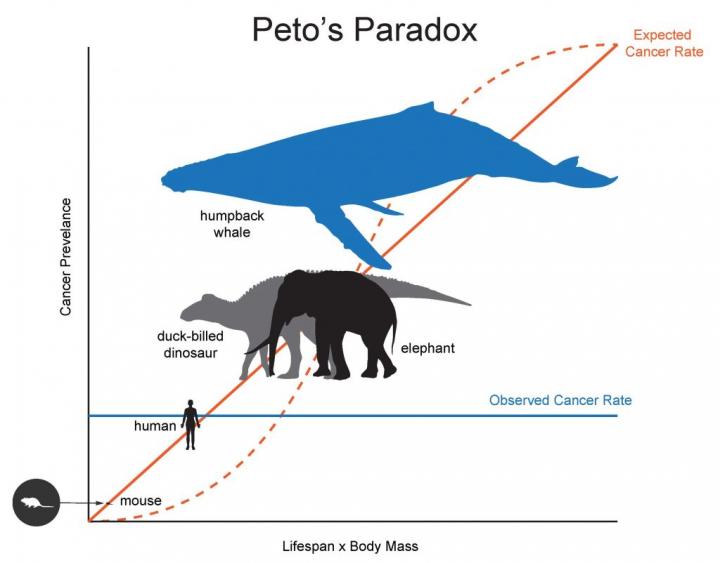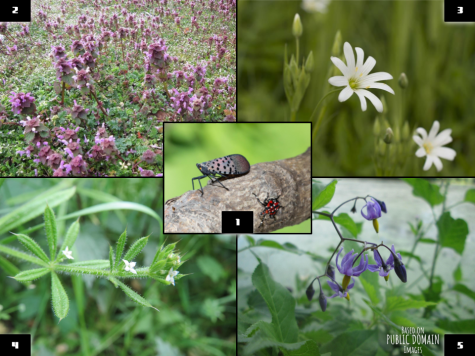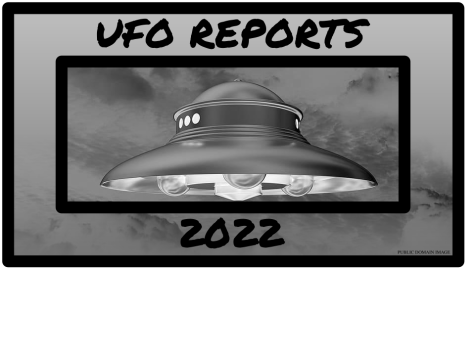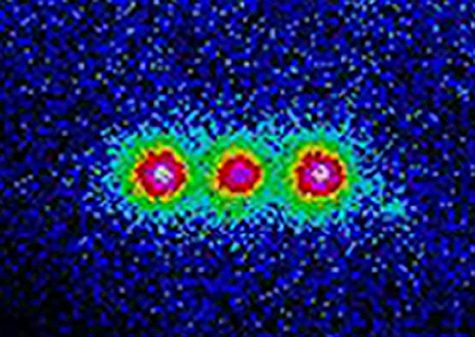Science for Everyone: Understanding Peto’s Paradox
December 23, 2020
Science is amazing and the basis of all our understanding of the physical and natural world. But sometimes, the everyday person is put off by science because it just seems too complex or abstract to wrap our heads around. This column is an effort to explain complicated – but super fascinating – science theories and ideas in ways that make sense to everyone. First up, Peto’s Paradox.
What is a paradox?
A paradox is something that contradicts itself. It is often something that has a logically unacceptable conclusion.
Who is Peto?
Richard Peto is the epidemiologist – that’s a scientist that studies diseases – which Peto’s Paradox is named after. He studies cancer patterns throughout the world and is the Professor of Medical Statistics and Epidemiology at the University of Oxford, England. He was knighted for his work in 1999 and received an honorary Doctor of Medical Sciences degree from Yale University in 2011. (All in all, he’s a pretty cool dude.)
What is Peto’s Paradox?
Peto’s Paradox is the theory that the larger an animal is and the longer it lives, the more likely it is to develop cancer. This is because when cells multiply, they have a chance of malfunctioning and becoming a cancerous growth. The larger an animal is, the more cells it has. The more cells that are replicating, the more of a chance it has of getting cancer. But, when scientists study cancer, they learned that this is not what is happening.
They found that when comparing humans and mice, humans live 50 times longer than mice and have about 1,000 times more cells than them, but the rate of cancer is almost the same in humans and mice. Even weirder, blue whales, with about 3,000 more cells than humans (let’s just say that’s a lot more), don’t ever seem to get cancer. Their findings show that larger animals have a lot less cancer than they should. In fact, larger animals are almost immune to cancer. There are two theories to why this is happening.
Why is this happening?
Evolution.
The first theory is simple enough; evolve or else become a blob of cancer. (No one wants to become a blob of cancer.) As multicellular beings evolved over the centuries, they became larger and larger, which means more cells. More cells mean more chances of getting cancer so they had to develop better cancer defenses.
These cancer defenses are called Tumor Suppressor Genes and what they do is prevent cancer mutations from happening or if the cell damage is beyond repair, they make the cell kill itself. Scientists found out that large animals have an increased number of these genes. This means that their cells require more mutations to develop a tumor.
Hypertumors.
The second theory to this paradox may be hypertumors. Hypertumors are the tumors of tumors. (Yes, you read them correctly.)
Cancer, in simple terms, is when cells do not cooperate. Cells usually work as a whole, but sometimes one cell breaks off and becomes a cancer cell. That cell only works for its own benefit and just tries to grow larger. However, to grow larger it needs resources. So, the cell tricks the body and makes the body grow blood vessels so that the tumor has lots of food. Then, the cancer cells start multiplying. If that happens too fast, sometimes a cancer cell can break off from the original tumor and start its own tumor. It cuts off the food supply to the first tumor and therefore, kills it.
This cycle can repeat for years, with tumor killing tumor killing tumor, and this can let large animals live for many years with tumors inside their bodies. The tumors just may never grow large enough to do any significant harm to the animal.
What does it mean for us?
If scientists are able to figure out why large animals are so immune to cancer, it may mean big things for humanity. Cancer is one of our greatest enemies and these studies can shed light on new cancer treatments. Maybe one day, we will even be able to get rid of cancer forever.
If you want to know more about Peto’s Paradox, these sources are pretty interesting.
https://en.wikipedia.org/wiki/Richard_Peto#:~:text=Sir%20Richard%20Peto%20FRS%20
https://bmcbiol.biomedcentral.com/articles/10.1186/s12915-017-0401-7#:~:text=Peto’s%20Paradox%20is%20named%20after,the%20carcinogen%20benzpyrene%20%5B1%5D.
https://www.youtube.com/watch?v=1AElONvi9WQ
https://www.pnas.org/content/116/6/1825











